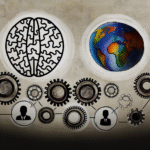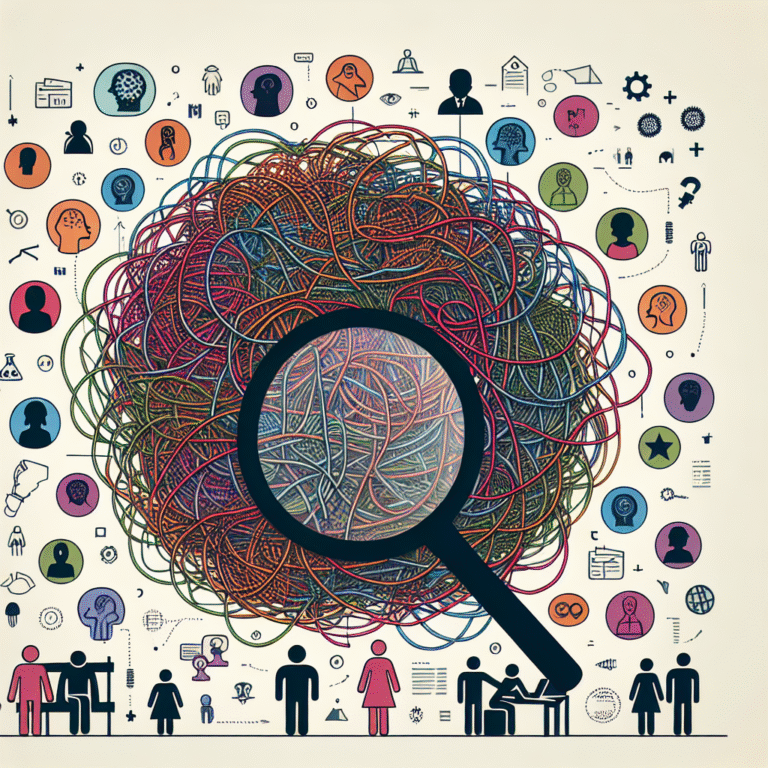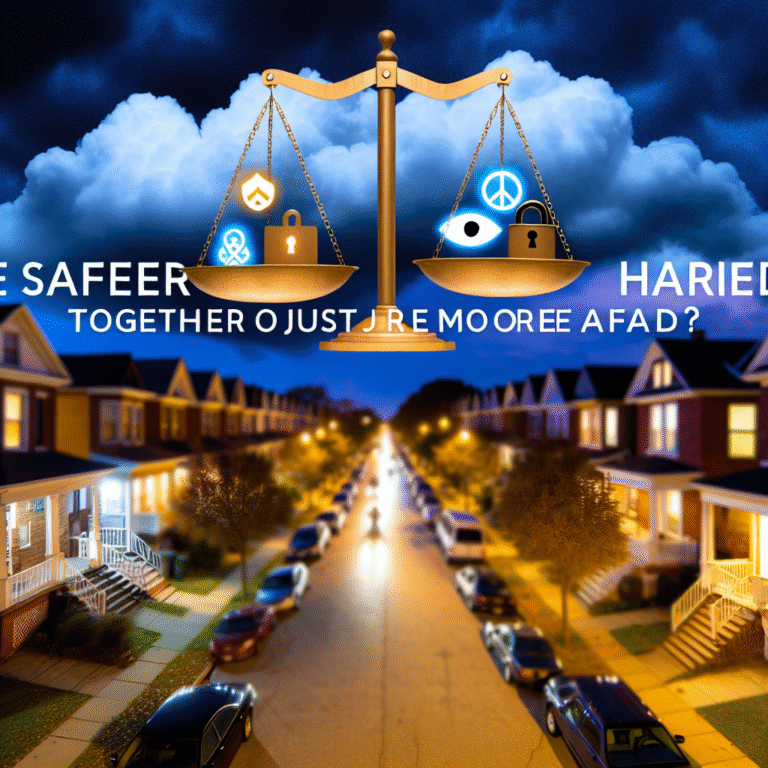
Silent Struggles: The Unseen Mental Toll of Extended Solitude
Introduction
In a world that is increasingly interconnected through technology and social media, the concept of solitude has transformed. What was once a revered state—the sanctuary of thought and creativity—now often feels like a silent struggle. The term "Silent Struggles: The Unseen Mental Toll of Extended Solitude" encapsulates the experience many face today: long periods of isolation that can undermine mental health in profound ways.
The relevance of this topic has become particularly acute during times such as the COVID-19 pandemic, where extended social distancing led countless individuals to grapple with mental health issues exacerbated by solitude. Whether voluntary or involuntary, extended solitude can leave scars invisible to the eye but deeply felt in the heart and mind.
The aim of this article is to delve deep into the unseen mental toll of extended solitude, exploring the psychological implications, presenting real-world case studies, and providing actionable strategies to navigate these silent struggles.
Understanding Solitude: A Double-Edged Sword
The Positive Side of Solitude
Before we dive into the toll solitude takes, it’s essential to recognize that not all solitude is detrimental. Many find solace and strength in being alone—an opportunity to reflect, recharge, and spur creativity. Writers such as Virginia Woolf and artists like Edward Hopper drew immense inspiration from their quietude.
The Dark Side of Extended Solitude
However, as beneficial as solitude can be, it becomes a silent struggle when prolonged. Factors such as loss of social interaction, changes to daily routines, and feelings of loneliness contribute to a mental landscape fraught with anxiety and distress. Understanding this double-edged nature of solitude is the first step in acknowledging its potential impacts on our mental health.
The Psychological Impacts of Extended Solitude
Loneliness vs. Solitude: Understanding the Distinction
While solitude can be a choice—an act of self-care—loneliness is often thrust upon individuals. This nuance is crucial when examining the mental toll of extended solitude.
| Solitude | Loneliness |
|---|---|
| Choice-driven | Often imposed |
| Can be restorative | Frequently distressing |
| Associated with creativity | Associated with sadness |
For many, the fine line between these two states can blur, leading to feelings of isolation and despair.
Case Study: Anna’s Creative Block
Anna, a graphic designer, thrived with solitude when preparing for her final art project at university. Yet, when the pandemic forced her into a workspace devoid of human interaction, her creativity dwindled. Instead of rejuvenation, she felt an overwhelming sense of loneliness. She reported increased anxiety, insomnia, and a profound sense of disconnect from her peers.
Analysis: Anna’s case highlights how solitude, while initially revitalizing, can devolve into a mental strain that stifles creativity and well-being when isolated for an extended period.
Common Mental Health Issues Arising from Solitude
Anxiety and Depression
Research shows a direct correlation between prolonged solitude and rising levels of anxiety and depression. Social interactions are vital for emotional stability, and when these are lacking, it can lead individuals towards crumbling mental states.
Cognitive Decline
Extended periods spent in solitude can adversely affect cognitive functioning. Studies indicate that social interactions play a critical role in keeping our mental faculties sharp. In isolation, many find their ability to think critically and creatively diminishes.
Fear of Re-engagement
Another aftereffect of prolonged solitude is a phenomenon referred to as "social anxiety." After months or years spent in quiet, the thought of re-engaging with peers can become a source of anxiety rather than excitement.
Strategies for Navigating Silent Struggles
Mindfulness and Self-Reflection
Embracing mindfulness can be an invaluable tool in managing the mental toll of solitude. Journaling, meditation, and self-reflection can help individuals process their feelings and transform negative energy into understanding.
Incorporating Social Interactions
Even small social interactions—be it a phone call with a friend or a brief chat with a neighbor—can positively impact mental health. Actively seeking these connections can help mitigate feelings of loneliness.
Scheduled Solitude vs. Unstructured Solitude
Choosing when and how to embrace solitude can make a significant difference in its impact. Scheduled solitude, such as dedicating specific times for quiet reflection, can leave individuals feeling empowered rather than isolated.
Seeking Professional Help
When the toll of extended solitude becomes overwhelming, seeking help from mental health professionals can be life-changing. Therapy offers strategies and insights to navigate the unseen struggles effectively.
The Role of Technology: A Double-Edged Sword
Connectivity Through Digital Platforms
In a way, technology offers a lifeline for those experiencing silence struggles. Virtual meetups and social media can provide connections that break the chains of isolation.
The Paradox of Digital Interaction
However, the paradox lies in the fact that excessive screen time can also promote a false sense of relationship, leading to deeper feelings of loneliness. Amidst virtual interactions, some might feel more disconnected than ever.
Chart: The Spectrum of Digital Engagement
| Type of Engagement | Mental Health Impact |
|---|---|
| In-person interaction | Positive, uplifting energy |
| Video calls | Moderately positive, but can feel lacking |
| Social media | Varies; can mask loneliness but may increase dissatisfaction |
Conclusion
The silent struggles associated with extended solitude are profound yet often overlooked. As we strive to reclaim the power of meaningful interaction, it’s essential to acknowledge the psychological toll that extended solitude can take. The insights provided in this piece highlight that while solitude can foster creativity and reflection, prolonged isolation can lead to significant mental health challenges.
Navigating the unseen mental toll of solitude requires a multifaceted approach. By integrating mindfulness practices, nurturing social connections, and understanding the complex dynamics of technology in our lives, individuals can find balance and resilience in their silent struggles.
A Motivational Takeaway
Remember, you’re not alone in your silence. Acknowledging these struggles is the first step towards healing. Be proactive—reach out, reflect, and nurture your mental well-being.
FAQs
1. Can solitude be good for mental health?
Absolutely! Short periods of solitude can foster creativity and self-reflection. It becomes a concern when prolonged.
2. What are the symptoms of mental distress caused by extended solitude?
Common symptoms include anxiety, depression, cognitive decline, and increased fear of social situations.
3. How can I manage feelings of loneliness during extended solitude?
Engage in mindfulness, maintain social connections through calls, seek professional help, and incorporate scheduled solitude.
4. Is technology helpful or harmful in combating solitude?
It can be both! While it allows for connection, excessive digital interaction can lead to feelings of isolation.
5. When should I seek help for mental health issues related to solitude?
If feelings of isolation become overwhelming and impact daily functioning, it’s crucial to consult with a mental health professional.
Exploring the keyword "Silent Struggles: The Unseen Mental Toll of Extended Solitude" can open discussions about mental health that many are hesitant to address, yet it is vital for personal and communal well-being.
















